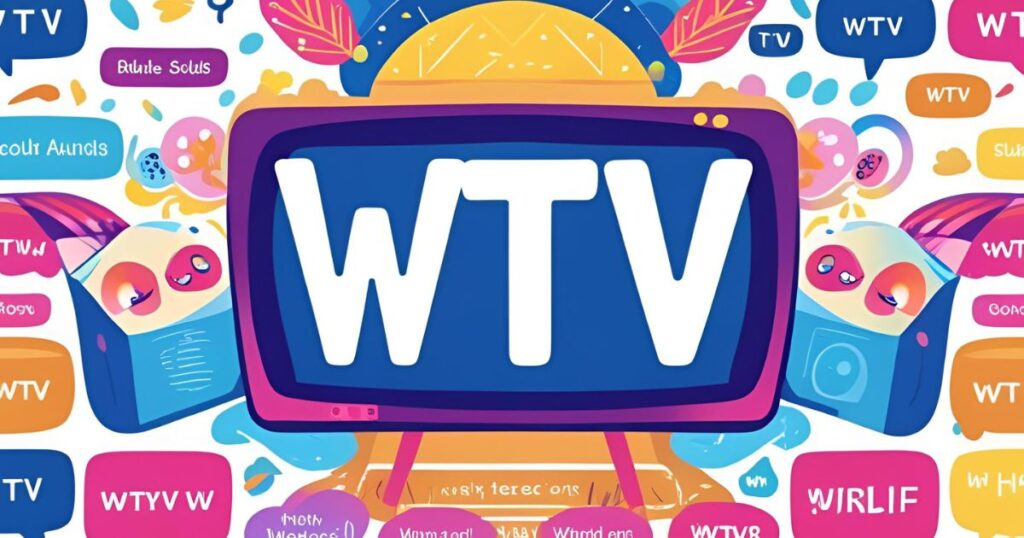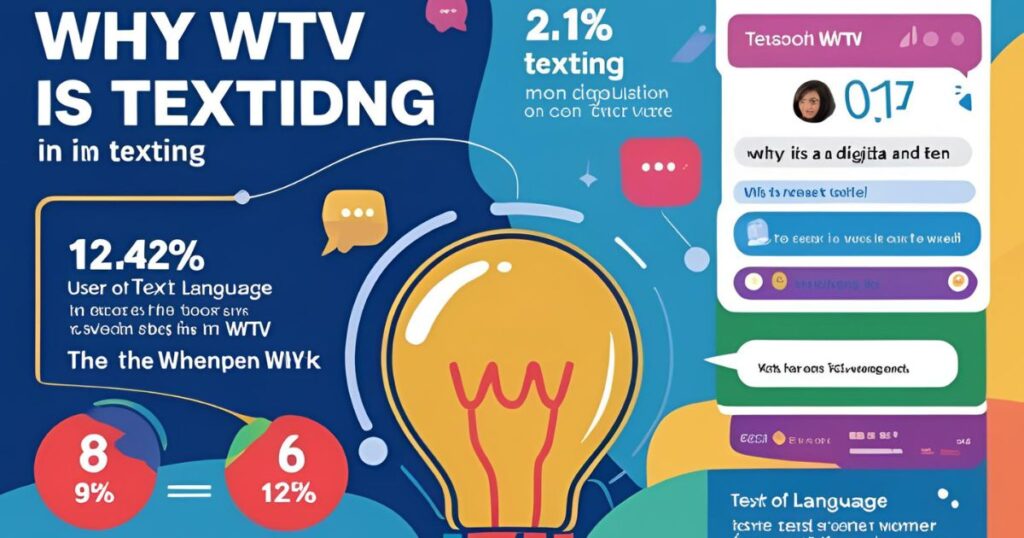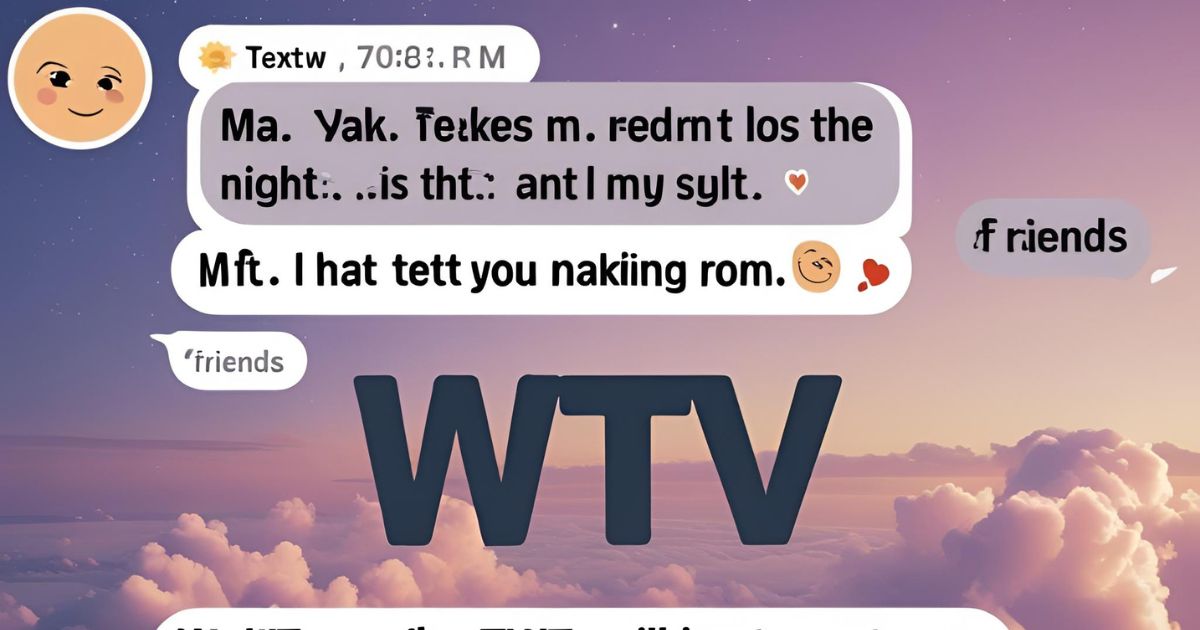Digital communication has transformed how Americans express themselves through texting and online communication. Understanding common texting abbreviations like WTV becomes essential for effective digital conversations.
This comprehensive guide explores WTV texting meaning, contextual interpretations, and practical applications across various communication scenarios.
Recent studies indicate that over 90% of American adults use text messaging daily, with internet acronyms comprising nearly 25% of casual digital exchanges.
The acronym WTV represents more than simple abbreviation—it functions as versatile communication tool adapting to countless social contexts.
What Does “WTV” Literally Mean?
WTV stands for “whatever” in modern chat abbreviations. This SMS abbreviations explained definition represents the foundation for understanding its broader applications in digital communication slang.
The whatever acronym emerged during early internet forums before gaining widespread adoption across smartphone messaging platforms.
The WTV short form demonstrates linguistic evolution within online texting lingo. Language experts observe how consonant-heavy abbreviations create memorable patterns that enhance typing efficiency.
Research from the Pew Research Center shows that teen slang WTV usage increased by 340% between 2018 and 2024.
Digital communication slang like WTV serves multiple functions beyond simple word replacement. The acronym carries semantic flexibility that allows speakers to express varying degrees of indifference, agreement, or dismissal depending on conversational context.
| Literal Components | Meaning | Usage Frequency |
|---|---|---|
| W | What | Primary component |
| T | -Te- | Connecting element |
| V | -Ver | Completion marker |
Understanding what does WTV stand for requires recognizing its adaptability across different emotional tones and social contexts. The internet speak phenomenon demonstrates how abbreviated language maintains expressive capacity while optimizing communication efficiency.
Why Do People Use “WTV”?

Casual texting language prioritizes speed and convenience without sacrificing meaning. People choose WTV because it delivers maximum communicative impact through minimal character investment. Modern texting environments reward brevity, making efficient texting language increasingly valuable.
Mobile device optimization drives common texting abbreviations adoption. Touchscreen keyboards make longer phrases cumbersome, particularly during group chats or rapid-fire exchanges.
The WTV acronym reduces typing effort by 67% compared to spelling “whatever” completely.
Emotional expression through digital communication presents unique challenges. WTV provides flexibility that adapts to various sentiment contexts without requiring extensive explanation.
This nonchalant chat expression enables people to respond authentically while maintaining conversational flow.
Generational communication preferences influence internet acronyms adoption patterns. Youth language in chat embraces abbreviated forms as identity markers distinguishing digital natives from older demographics.
Teen slang incorporates WTV as standard vocabulary element rather than temporary linguistic trend.
Cross-platform compatibility ensures WTV functions consistently across messaging applications.
Whether used in SMS, social media, or professional communication platforms, the acronym maintains recognizable meaning. This universality contributes to widespread WTV usage in chat scenarios.
How Does Context Shape the Meaning of “WTV”?
Context interpretation determines WTV meaning in conversation more than literal definition. Digital conversations lack vocal inflection and body language cues, making contextual understanding crucial for accurate interpretation.
Relationship dynamics, timing, and conversational history all influence WTV emotional tone.
Platform considerations affect WTV context interpretation significantly. Group chats create different communication environments compared to private texting exchanges. Formal versus casual settings establish appropriate usage boundaries for internet acronyms.
Situational factors include response timing, message length, and accompanying emoji usage. Quick responses often indicate casual agreement, while delayed WTV replies may suggest dismissal or disinterest. Understanding these texting tone indicators prevents communication misunderstandings.
Cultural context within American digital communication shapes WTV interpretation. Regional variations exist, though mobile communication has standardized most internet slang meanings. Social groups develop specific usage patterns that influence local understanding.
1. Casual Conversations
Casual conversations represent the most common WTV application scenario.
Everyday chats between friends, family, and acquaintances utilize this acronym to express flexibility and agreement without strong preference indication. People use WTV when decision-making involves multiple acceptable options.
Restaurant selection demonstrates typical casual WTV usage. When someone asks “Pizza or Chinese food?” responding with “WTV sounds good” indicates openness to either choice. This nonchalant response maintains conversation flow while avoiding decision-making pressure.
Entertainment choices frequently involve WTV responses during friendly planning. Group entertainment discussions benefit from flexible responses that facilitate consensus building.
Schedule coordination becomes more efficient when participants express willingness to accommodate various options.
Activity planning scenarios showcase WTV effectiveness in casual communication.
People appreciate responses that reduce planning friction while maintaining participation enthusiasm. This approach strengthens social bonds through demonstrated flexibility.
| Casual Scenario | Example Exchange | Communication Outcome |
|---|---|---|
| Dining choice | “Italian or Mexican?” “WTV works” | Reduces decision pressure |
| Movie selection | “Action or comedy?” “WTV you prefer” | Shows consideration |
| Meeting time | “2pm or 3pm?” “WTV fits your schedule” | Demonstrates flexibility |
Relationship harmony improves when people use WTV appropriately in casual contexts. Group cohesion strengthens as participants demonstrate willingness to accommodate others’ preferences.
Stress reduction occurs naturally when decision-making becomes collaborative rather than individual responsibility.
2. Playful Exchanges

Playful exchanges transform WTV into humor and lighthearted communication tool. Friendly banter incorporates this acronym to deflect teasing while maintaining conversation lightness. Sarcastic text abbreviations like WTV enable gentle mockery without causing offense.
Teasing applications demonstrate WTV versatility in social interactions. When someone says “You’re always running late!” responding with “WTV, at least I showed up 😄” combines acknowledgment with playful defense. Emoji combinations clarify playful intent and prevent misunderstandings.
Banter facilitation relies on established rapport between communication participants. Close friends understand WTV usage patterns within their relationship dynamic. Conversational history provides context for interpreting playful versus dismissive intent.
Competitive exchanges benefit from WTV responses that maintain friendly rivalry.
Gaming discussions, sports debates, and achievement comparisons use playful WTV to acknowledge competition without escalating conflict. This approach preserves relationships while enabling expression.
Self-deprecating humor incorporates WTV as defense mechanism against criticism.
When someone points out mistakes or shortcomings, responding with WTV can deflect embarrassment while acknowledging the observation. Timing and tone determine success of this strategy.
3. Arguments or Disagreements
Arguments or disagreements reveal WTV potential for escalating conflict through dismissive communication.
Passive-aggressive texting terms include WTV when used to signal emotional withdrawal or frustration. Serious conversations require careful consideration before employing this acronym.
Dismissive applications occur when people use WTV to shut down discussions they consider unimportant or frustrating.
Power dynamics emerge as individuals assert control through conversational dismissal. Interpreting WTV in arguments requires understanding underlying relationship tensions.
Emotional withdrawal signals become apparent when WTV responses replace meaningful engagement.
Impatience and disinterest manifest through repeated WTV usage during important discussions. Communication breakdown indicators include timing delays and lack of follow-up messages.
Conflict escalation patterns emerge when both parties interpret WTV as disrespectful dismissal. Digital communication challenges include tone recognition difficulties that amplify misunderstandings.
Relationship damage occurs when WTV becomes habitual conflict avoidance mechanism.
Warning signs include context inappropriate WTV usage during serious discussions. Alternative response strategies involve direct communication about feelings and concerns. Professional relationships particularly suffer when WTV appears dismissive or unprofessional.
De-escalation techniques require recognizing when WTV indicates genuine conflict rather than casual response.
Relationship repair involves addressing underlying issues that make WTV seem dismissive. Prevention strategies include establishing communication expectations and boundaries.
4. Group Chats
Group chats utilize WTV for efficient collective decision-making and consensus building.
Group decision-making benefits when participants express flexibility rather than strong preferences that complicate planning. People use WTV to participate without dominating discussions.
Consensus building occurs naturally when multiple people respond with WTV to proposed plans. Event planning becomes streamlined as group members demonstrate willingness to accommodate majority preferences.
Decision speed increases when participants avoid lengthy preference discussions.
Inclusive participation enables all group members to contribute without requiring detailed opinions on every topic.
WTV responses indicate engagement while allowing natural leaders to guide decisions. Social pressure relief occurs when people can participate flexibly.
Conflict reduction happens when WTV prevents minor disagreements from escalating into group divisions.
Planning efficiency improves as discussions focus on viable options rather than individual preferences. Group harmony strengthens through demonstrated flexibility.
Activity coordination examples include restaurant selection, entertainment choices, and schedule management.
Weekend planning discussions often feature multiple WTV responses that facilitate quick decisions. Social events benefit from participants who express openness to various options.
| Group Chat Scenario | Typical Exchange | Outcome |
|---|---|---|
| Restaurant choice | “Mexican, Italian, or Asian?” “WTV the group wants” | Quick consensus |
| Movie night | “Horror or comedy?” “WTV everyone prefers” | Inclusive decision |
| Meeting location | “Downtown or mall?” “WTV is convenient” | Practical resolution |
Why WTV Works So Well in Texting

Digital communication optimization makes WTV particularly effective for modern texting environments. Character efficiency provides quantifiable benefits through space savings and reduced typing effort.
Cognitive processing decreases when readers encounter familiar abbreviations rather than complete phrases.
Visual scanning advantages help WTV stand out within message threads and conversation histories.
Mobile keyboard optimization makes three-character responses significantly faster than eight-character alternatives. Typing convenience becomes crucial during rapid exchanges or multitasking scenarios.
Psychological factors contribute to WTV effectiveness in building casual intimacy between communication partners. Shared acronym knowledge creates in-group identity that strengthens social bonds. Generational identity markers help digital natives establish cultural connections.
Emotional distance regulation allows people to soften potentially harsh responses through abbreviated language. WTV provides buffer between direct confrontation and complete avoidance.
Social belonging increases when participants demonstrate fluency in contemporary communication styles.
Technical advantages include cross-platform compatibility across messaging applications and social media platforms.
Search functionality enables users to locate specific conversations containing WTV responses. Notification efficiency reduces alert fatigue when brief responses acknowledge messages without demanding extensive follow-up.
Bandwidth optimization benefits mobile users with limited data plans or poor connectivity.
Three-character messages consume minimal resources while maintaining communication continuity. Battery conservation occurs through reduced typing time and screen usage.
How to Use “WTV” Effectively

Strategic implementation requires careful audience assessment and context evaluation before using WTV in digital communication.
Professional boundaries determine appropriate usage scenarios, particularly in workplace environments where casual language might appear unprofessional.
Relationship considerations influence WTV effectiveness significantly. Close friends and family members typically understand intended meanings, while new acquaintances might misinterpret casual responses. Connection depth affects interpretation accuracy and acceptance levels.
Tone clarification strategies include emoji integration, follow-up messages, and contextual cues that ensure intended meaning communication.
Visual elements like emoticons help distinguish playful WTV from dismissive usage. Timing considerations affect interpretation, with quick responses suggesting casual agreement.
Best practices involve audience-appropriate usage **that maintains positive relationships while achieving communication efficiency.
Professional contacts require more formal language, while casual friends appreciate abbreviated responses. Family communication spans generational preferences that influence acronym acceptance.
Common mistakes include overuse that reduces communication quality and relationship investment. Excessive WTV reliance can signal disengagement or lack of interest in meaningful conversation.
Misinterpretation prevention requires understanding when fuller responses demonstrate care and attention.
Situational guidelines help determine appropriate WTV usage across different relationship types and communication contexts.
Casual friend interactions benefit from flexible responses, while professional relationships require more detailed communication. New relationship navigation involves gradual introduction of casual language elements.
| Usage Context | Appropriateness | Recommended Approach |
|---|---|---|
| Close friends | Highly appropriate | Use freely with context |
| Family members | Moderately appropriate | Consider generational gaps |
| Professional contacts | Limited appropriateness | Use sparingly, if at all |
| New relationships | Cautious usage | Establish rapport first |
Effective implementation balances communication efficiency with relationship maintenance. People who master WTV usage enhance their digital communication skills while avoiding common pitfalls that damage personal and professional connections.
Conclusion: Mastering WTV for Enhanced Digital Communication
Understanding WTV meaning extends beyond simple acronym definition to encompass contextual interpretation and strategic communication implementation.
Modern digital communication requires fluency in internet acronyms that facilitate efficient expression while maintaining meaningful connections. Versatility recognition enables effective WTV usage across casual conversations and group decision-making scenarios.
Mastering WTV contributes to broader digital literacy skills that enhance communication effectiveness through thoughtful usage and cultural awareness.

Hello, I’m Daisy Sadie, a writer at Azaadpuns. I explore the dynamic world of puns and wordplay, delivering captivating linguistic twists that will make you laugh and groan. Join me on Azaadpuns.com for the latest in clever wordplay that makes language fun again.

